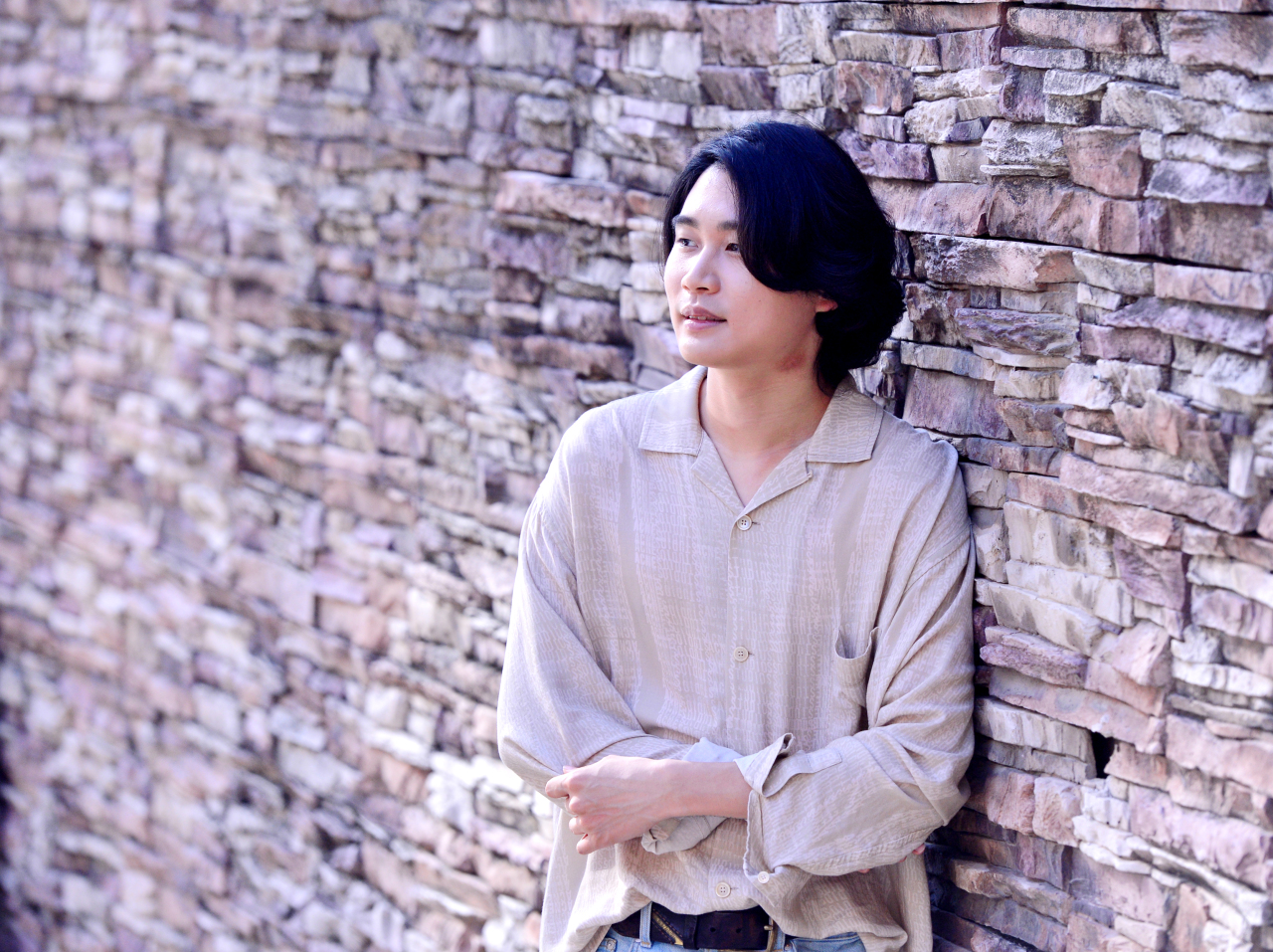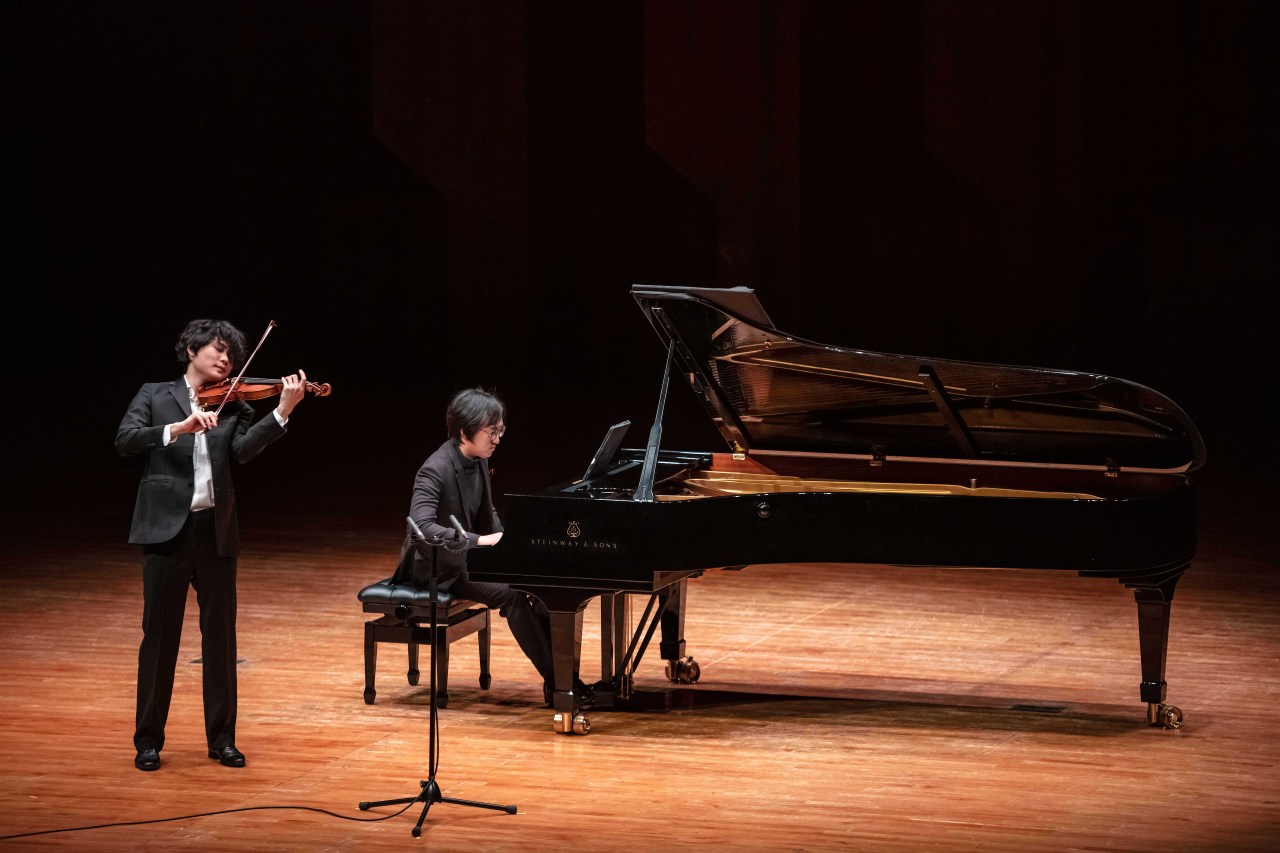In March, Yang returned with his second album, “The Genetics of Strings,” also with the Deutsche Grammophon. The title aptly captures the spirit of the album which explores the materiality and history of the string.
The 11-track album starts with Yang’s own composition and improvisation based on vocal music by 12th century abbess Hildegard von Bingen, continues on to the Baroque period and skips to the 20th century with “Gypsy Melody” by Rodin Schedrin. With violist Richard Yogjae O’Neill, Yang performs Handel’s Sarabande reinterpreted and extrapolated by Norwegian composer Johan Halvorsen (1864-1935).
The variation on Sarabande is followed by four pieces from Astor Piazzolla’s “History of Tango” and Maurice Ravel’s Tzigane rearranged for the violin and harp. The fleeting, ephemeral sounds made by the bow just barely touching the strings, which Yang likens to floating ashes, make up Salvatore Sciarrino’s “Capriccio No. 2,” a fitting conclusion to the album that began with Hildegard’s praise of the Holy Spirit, associated with fire.
“I wanted this album to be an album that only I could make,” says Yang about the concept of “The Genetics of Strings.”
“I wondered how my portrait, if there were to be one, would be painted. I thought about what story would be the most relatable and powerful in telling my story,” says Yang. That led him to explore the strings. “I became curious about strings as a material. I have been touching this material with my hands since I was 5 and the sound that I make come from the strings. I then began investigating the strings,” Yang says.
His research led him to conclude that the history of strings, the changes the strings underwent as they came to be used in musical instruments, the changes in materials and the changes in tension could form a single story. “I thought this could be told in an album and once I started thinking this way, many doors opened,” he says.
He set about showing different tensions of the strings -- from the strings tuned to A at 366Hz for the piece inspired by Hildegard’s hymn to the strings that are tuned to A at 415Hz for the two Baroque pieces. The tension of the strings is progressively heightened as the album progresses, until it reaches 444Hz.
Since the album deals exclusively with strings, a number of works were rearranged to feature different string instruments, replacing other instruments. For the first track “Inspirations from Hildegard von Bingen’s ‘O ignis Spiritus paracliti’” Yang enlisted soprano Im Sun-hae to sing the vocal part. “The album is about strings, but I thought it would be good to start with a human voice. I wanted to show a very human side of strings,” he says.
Inspiration has many meanings but Yang is referencing the act of drawing in breath in the title of his first commercial composition. “The reason it is titled ‘Inspiration’ is because without oxygen, there is no combustion,” Yang says. “It is only when I inspire, when a new energy comes inside me, an input, that an output can be created,” Yang says.
Although Yang sometimes refers to it as a rearrangement, it is more of a composition. And Yang expresses satisfaction with his first composition. “I read around 20 papers and focused on thinking about the aesthetics of the Middle Ages. Would vibrato have been considered beautiful back then? We don’t know,” Yang says. Rather than focusing on recreating the aesthetic values of that era, Yang decided to focus more on what it means to reinterpret the work today. “I read many books, listened to many recordings and put myself into the period when, unlike today, life and religion were one,” Yang says.
A polymath, Hildegard also saw visions. “I think she is better known as a writer or a visionary than as a composer,” says Yang. “Music was a way to remember a prophecy or a vision. I felt the presence of these unusual forces and those aspects had an influence on my rearrangement,” Yang says.
Asked about his favorite piece in the album, Yang says without hesitation, “Corelli.” He is referring to Arcangelo Corelli’s Sonata in D minor “La Follia” op.5/12.
“Tuning the strings low and playing with a harpsichordist and a Baroque cellist was something I had never done before. But I have always liked early music,” he says. While it was a big challenge, the result was very good, according to Yang. “I realized that the allure of early music is in how each performance is different,” Yang says.
Now that he has covered the history of strings in a single album, what next?“With each album, I would like to show how my identity as an artist is changing, how this DNA is changing,” he says. He might also focus on a specific period, composer or strings that he is particularly attracted to.
“I have a ‘minority’ sentiment, so I like discovering new pieces. I would like to show performances of pieces that are not well known, or pieces that are well known, but for which new arrangements are possible,” Yang says.
And he definitely wants to continue with composing. “I think creation has power when it is done because I don’t think I can continue to breathe without expelling it. The Hildegard piece involved that process,” Yang says.
“The creative process is endless,” Yang says. “You have to know when to stop. This is a moment when pain and ecstasy coexist for me.”
Apart from composing music, Yang has in mind to one day write a book. “One of my dreams is to write a novel. You know there is that book ‘Perfume.’ If that book is about the olfactory senses, I would like to write a novel that deals with the aural senses,” he says.
When Yang reads, he makes annotations, taking note of how certain words are used. “I read thinking about how I would like to use certain expressions when I write my novel. I read thinking that it is an investment in my future,” he says.
By the way, he is a fan of Hermann Hesse, counting “Narcissus and Goldmund,” a story of friendship between “an impulsive and free-spirited Goldmund and Narcissus, a very dedicated monk,” as the book that has impressed him the most.
“The very short, concise sentences contain so many meanings,” says Yang in explaining why he is drawn to Hesse. While the violinist and future author also really likes the Hesse’s other works, such as “Demian” and “Steppenwolf,” “Narcissus and Goldmund” is the book that he would take with him to his grave, he says.
Before the interview proper began, I noticed a tattoo on Yang’s left arm. I stepped up closer to make out the somewhat crude letters -- LIEBENZELLER.
It is the name of a group that he has formed with a hip-hop artist friend and a fashion designer friend, Yang explains. The group is named after the brand of rosin that he uses, the violinist adds. The plan is to have artists of various genres join, according to Yang.
It is already an eclectic mix of creative types and I am curious as to what they may produce, especially with Yang, brimming with a desire to create and who revels in the pain and the ecstasy of the creative process, at the helm.
By Kim Hoo-ran (
khooran@heraldcorp.com)









